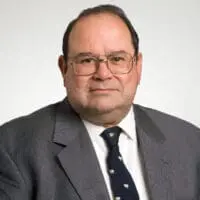Publication
Inherently Concerted Activities
By Gerard Morales
On March 31, 2021, Peter Sung Ohr, Acting General Counsel (GC) of the National Labor Relations Board (NLRB or Board) issued a Memorandum (GC 21-03) to all NLRB Regional Offices outlining his perspective regarding the prosecution of charges involving whether certain employee conduct constitutes protected, concerted activities. The GC Memorandum is of significance to all employers because of the breadth of the concept of what constitutes protected, concerted activity expressed by the GC, as the chief NLRB prosecutor. It is clear from the Memorandum that an increase in the issuance of complaints can be expected, based on allegations that unfair labor practices were committed by employers because employees’ conduct or activities constituted protected, concerted activities.
Preliminarily, it should be noted that concerted activities by employees most often occur outside of the context of any union activity.
The GC notes in his Memorandum that employees’ right to engage in “concerted” activities for the purpose of mutual aid and protection is legally protected, not only when the activity involves matters concerning the workplace but also when they involve employees’ interests as employees. Therefore, employee activities are protected when they involve efforts to “improve their lot as employees through channels outside the immediate employee-employer relationship as well as in support of employees of employers other than their own.”
Based on that concept of what constitutes protected, concerted activities, the GC emphasizes that so long as there is a direct nexus to employees’ interests as employees, activities that involve political and social justice advocacy may be protected. In this regard, citing Meyers Industries, the GC reminds the Regional Offices that the activity may be concerted not only when it is “engaged in with or on the authority of other employees” but also “when an employee seeks ‘either to initiate or to induce or to prepare for group action.’” See Meyers Indus., 268 NLRB 493 (N.L.R.B. 1984), decision supplemented, 281 NLRB 882 (N.L.R.B. 1986), disapproved of by Ewing v. N.L.R.B., 768 F.2d 51 (2d Cir. 1985).
Importantly, the GC also emphasizes in his Memorandum that employee discussions of certain “vital elements of employment,” may render the discussions “inherently concerted, ‘even if group action is nascent or not yet contemplated.’” In this regard, such discussions may be viewed as protected concerted activity, irrespective of whether “other employees agree with the complaint or join in the protest.”
This rather expansive concept of what constitutes protected, concerted activity expressed in the GC Memorandum, signals that vigorous prosecution of unfair labor practice charges, involving allegations of concerted activities, should be expected.
About Snell & Wilmer
Founded in 1938, Snell & Wilmer is a full-service business law firm with more than 500 attorneys practicing in 17 locations throughout the United States and in Mexico, including Los Angeles, Orange County, Palo Alto and San Diego, California; Phoenix and Tucson, Arizona; Denver, Colorado; Washington, D.C.; Boise, Idaho; Las Vegas and Reno-Tahoe, Nevada; Albuquerque, New Mexico; Portland, Oregon; Dallas, Texas; Salt Lake City, Utah; Seattle, Washington; and Los Cabos, Mexico. The firm represents clients ranging from large, publicly traded corporations to small businesses, individuals and entrepreneurs. For more information, visit swlaw.com.

